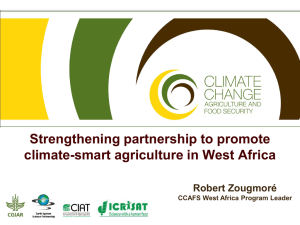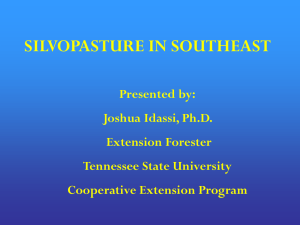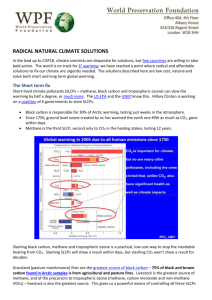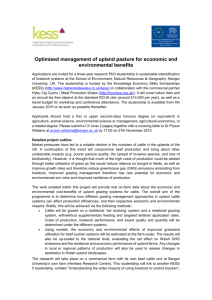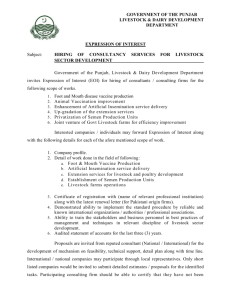Comment 2: Livestock Access to Water
advertisement
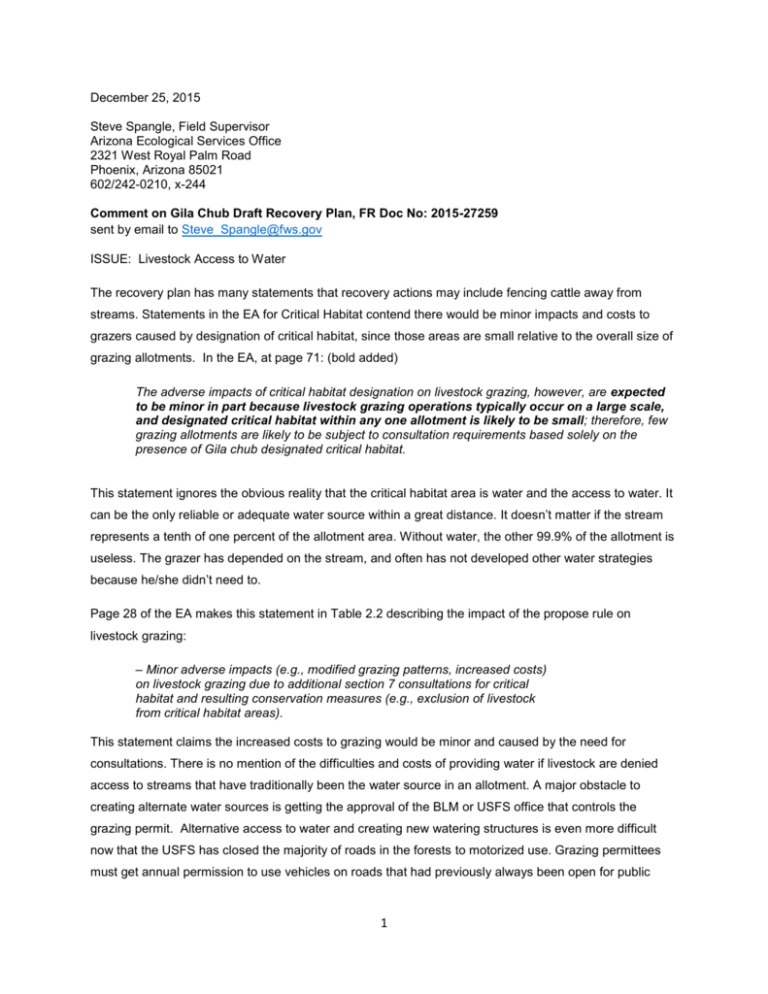
December 25, 2015 Steve Spangle, Field Supervisor Arizona Ecological Services Office 2321 West Royal Palm Road Phoenix, Arizona 85021 602/242-0210, x-244 Comment on Gila Chub Draft Recovery Plan, FR Doc No: 2015-27259 sent by email to Steve_Spangle@fws.gov ISSUE: Livestock Access to Water The recovery plan has many statements that recovery actions may include fencing cattle away from streams. Statements in the EA for Critical Habitat contend there would be minor impacts and costs to grazers caused by designation of critical habitat, since those areas are small relative to the overall size of grazing allotments. In the EA, at page 71: (bold added) The adverse impacts of critical habitat designation on livestock grazing, however, are expected to be minor in part because livestock grazing operations typically occur on a large scale, and designated critical habitat within any one allotment is likely to be small; therefore, few grazing allotments are likely to be subject to consultation requirements based solely on the presence of Gila chub designated critical habitat. This statement ignores the obvious reality that the critical habitat area is water and the access to water. It can be the only reliable or adequate water source within a great distance. It doesn’t matter if the stream represents a tenth of one percent of the allotment area. Without water, the other 99.9% of the allotment is useless. The grazer has depended on the stream, and often has not developed other water strategies because he/she didn’t need to. Page 28 of the EA makes this statement in Table 2.2 describing the impact of the propose rule on livestock grazing: – Minor adverse impacts (e.g., modified grazing patterns, increased costs) on livestock grazing due to additional section 7 consultations for critical habitat and resulting conservation measures (e.g., exclusion of livestock from critical habitat areas). This statement claims the increased costs to grazing would be minor and caused by the need for consultations. There is no mention of the difficulties and costs of providing water if livestock are denied access to streams that have traditionally been the water source in an allotment. A major obstacle to creating alternate water sources is getting the approval of the BLM or USFS office that controls the grazing permit. Alternative access to water and creating new watering structures is even more difficult now that the USFS has closed the majority of roads in the forests to motorized use. Grazing permittees must get annual permission to use vehicles on roads that had previously always been open for public 1 use. The delays caused by these administrative processes have high costs. An entire year of operation, or more, could be lost trying to get permission for an alternate watering source. The distance to water is a critical factor for livestock grazing and must be considered in any discussion of impacts. Distance to water is covered in another comment we submitted. The impacts are twofold, to the health and vigor of the animals and to the costs of providing sufficient water when and where it is needed. Access to water, availability of sufficient water and the costs of providing water are life and death issues for the livestock grazing operator. The discussion of grazing and economic impact costs is very uneven. The EA is more forthcoming about admitting to economic impacts on the San Carlos Apache Tribe. At page 64, these economic impacts are listed. Economic impacts that may be incurred by the San Carlos Apache Tribe as a result of critical habitat designation stem from: • administrative costs of complying with the ESA requirements and completing a fish management plan; • limitations on livestock use of proposed critical habitat for grazing and water; • limitations on timber harvest; • limitations on recreational opportunities; and • limitations on fire management activities (Industrial Economics 2005). The EA’s Table 3.8 Summary of Future Costs 2005-2024 (p. 68) shows great uncertainty for costs to livestock, as it does for tribal activities and transportation. 2 With numbers from $450,900 to $3,783,500, the livestock grazing cost variation is over 800%. The range of “estimate” for the other resources are also extremely wide. This is implicitly an admission that the Service really has no idea what the costs will be. REMEDY: Correct the misstatements in the plan about the impacts on grazing being minor. Include statements from this comment about the crucial importance of water in the critical habitat to the livestock grazing, and the difficulty of developing alternative sources. Correct the estimate of costs to include the possibility of operators losing entire seasons of grazing because water is not available. Thank you for the opportunity to comment, 3 1. Distance from Water as a Factor in Grazing Capacity of Rangeland Author: Valentine, K. A. Source: Journal of Forestry, Volume 45, Number 10, 1 October 1947, pp. 749-754(6) Publisher: Society of American Foresters Abstract: An important factor influencing use of range forage is nearness to water supply. The author points out how intensity of grazing use declines with increased distance from water. Applying these results to a specific pasture made possible a correction in ordinary range-carrying capacity estimates to values in accordance with good range use. 2. Technical Notes USDA Soil Conservation Service October 1979 Title of the article is Livestock Water, author Roy S. Mann, Range Conservationist. The article was presented as a California Technical Note, January 1979 We provide excerpts from the article, showing that distance to water has a significant effect on livestock. Quoting Sneva et al, 1977, the author says; Watering every other day, however, should not be done if the herd consists of lactating cows with calves” Limited water can reduce calf gains. Forcing animals to trail one to two miles every other day did not reduce water intake beyond either every other day watering or the one to two-mile daily travel to water, It did permanently reduce the weight of heifers due to calve in the fall. The author cites the Valentine study on distance to water and provides this graphic from Valentine: 4 The author presents these points made by Valentine, as a result of his studies: 1. Size and shape of pastures and location of watering sites greatly affect the degree of use. 2. Pastures which have about the same production of the same kind of vegetation, but which are considerably different in size, may have quite different stocking rates, if they are not equally well watered. 3. Pastures may be the same size and shape and contain the same kinds and amount of vegetation and still have different use patterns, if water locations in them are considerably different. The author next presents findings from Sneva, et al, 1977. These points are relevant to the discussion of fencing streams to prevent livestock use. To summarize, cows and yearlings can tolerate being watered every 48 hours or trailing one to two miles. But the calves can’t tolerate it and show reduced weight gains. For calves watered every 48 hours, their gains were reduced by 0.51 lbs per day. Calves showed little desire for water in June. But as temperatures rose (and cow’s milk flow probably was reduced), where calves had water they gained 0.4 lbs more per day than calves which did not get water. The guidelines for distance to water range from 1/4 to 1/2 mile in rough terrain, to 3/4 to 1 mile in level terrain. Cows require 7.5 to 19 gallons of water per day (general requirements). If also providing water for wildlife, elk require 2-3 gallons per day, and deer 1/2-1 gallon. These findings are important to assessing the needs of livestock and costs of providing water. Thank you for the opportunity to comment 5
